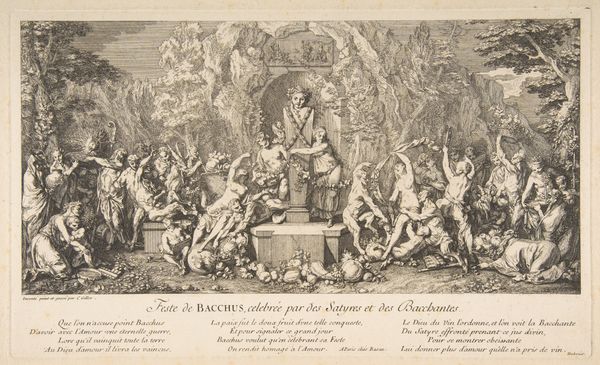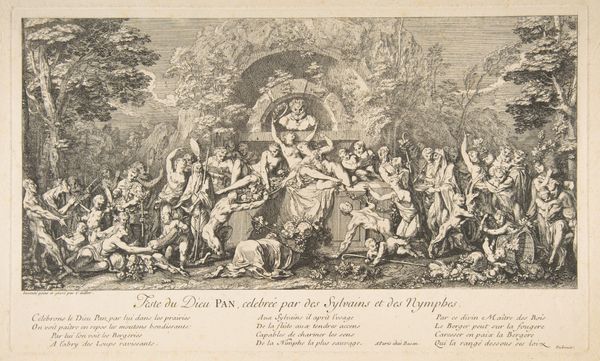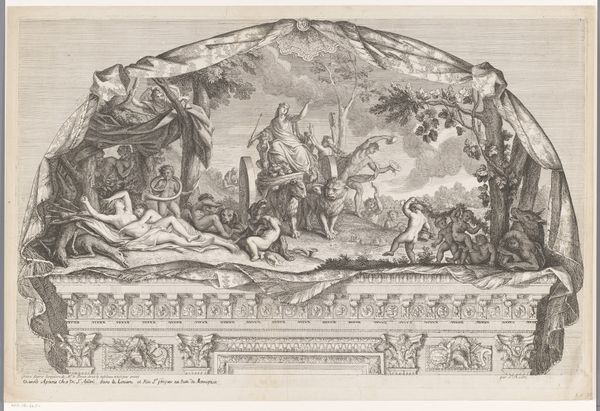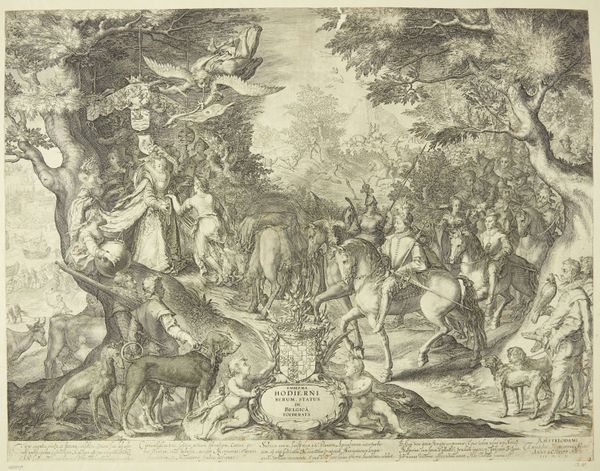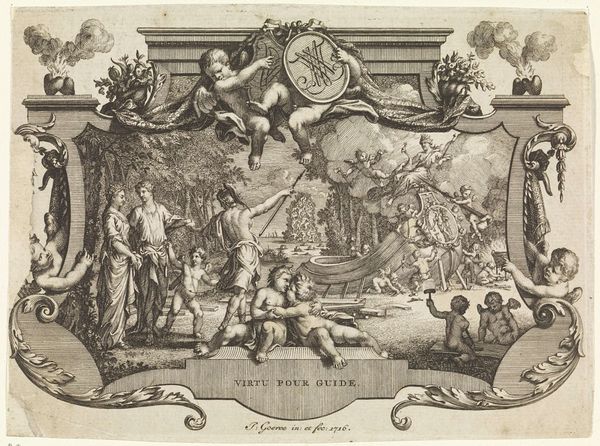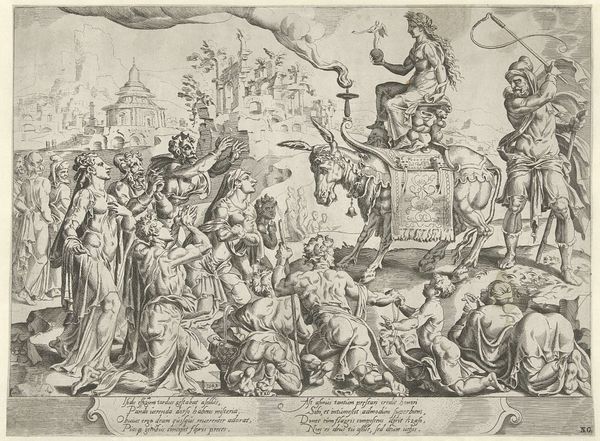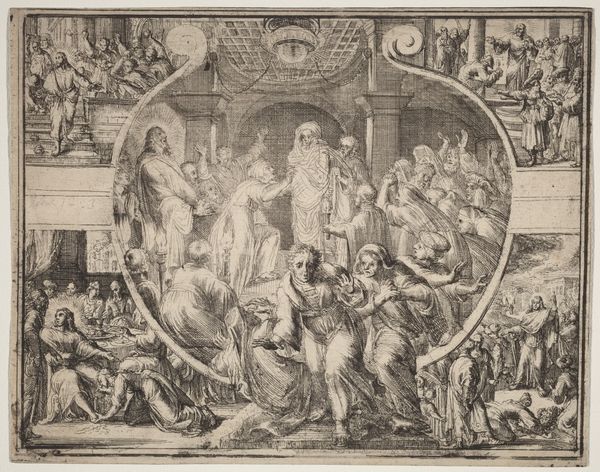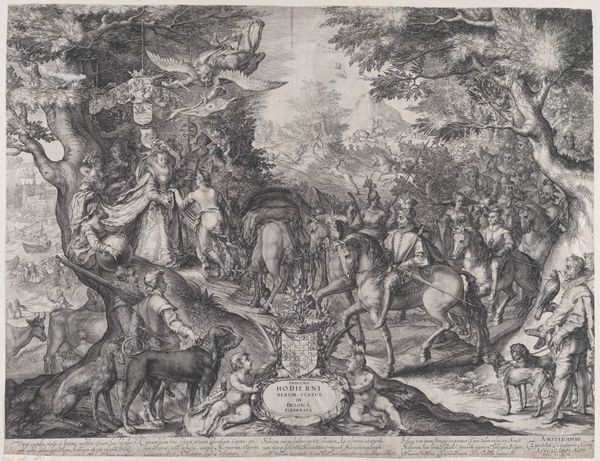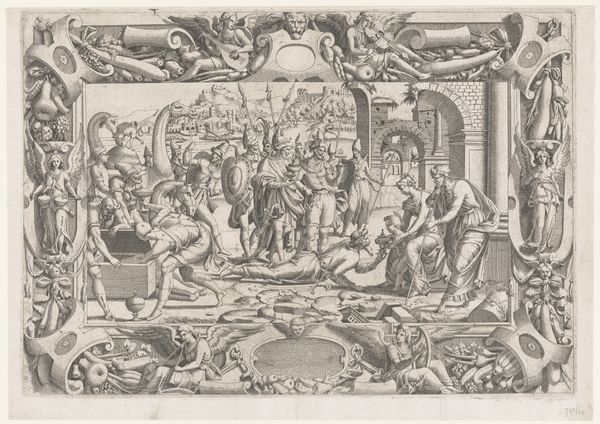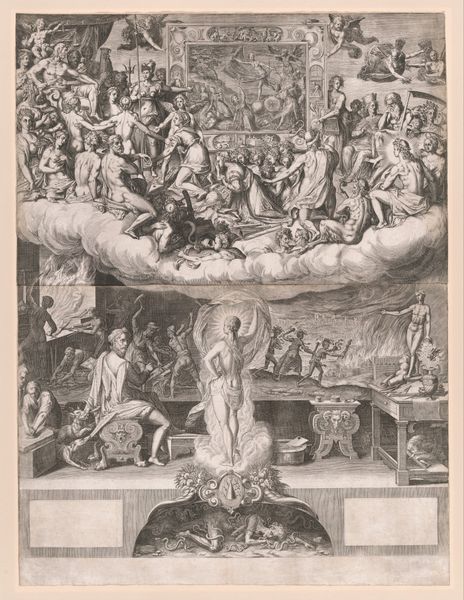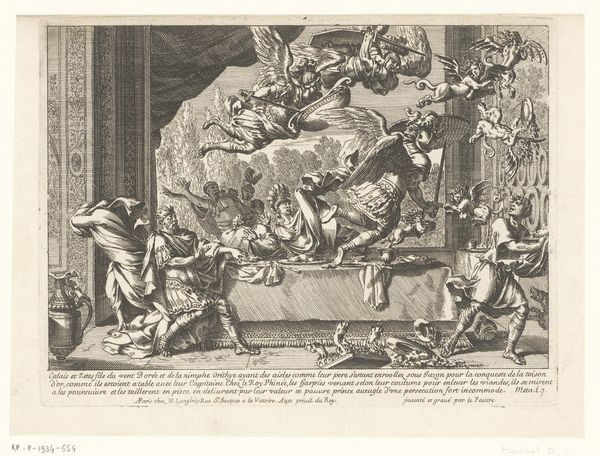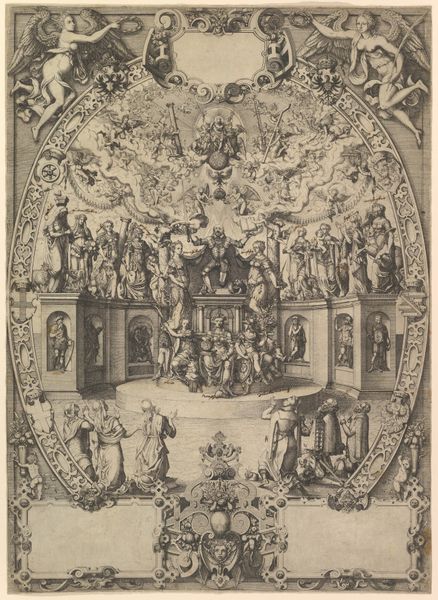
drawing, print, etching
#
drawing
#
baroque
#
ink painting
# print
#
etching
#
landscape
#
figuration
#
men
#
pen work
#
genre-painting
#
musical-instrument
#
nude
#
male-nude
Dimensions: sheet: 11 5/16 x 16 3/4 in. (28.8 x 42.6 cm) image: 8 5/16 x 14 in. (21.1 x 35.6 cm)
Copyright: Public Domain
Claude Gillot made "The Feast of the Faun, Dieu des Foreste" using etching, sometime in the early 18th century. It's an image born from the skilled labor of engraving, a process demanding precision and patience. Note the stark contrast between the dark lines and the white paper. This wasn't just a design choice, but a direct result of the etching process. The artist would have meticulously cut into a metal plate, and the incised lines hold the ink, transferring the image to paper under great pressure. Every detail, from the figures’ expressions to the foliage, is carefully etched. The very qualities of the print – its reproducibility, its graphic clarity, its capacity to circulate widely – speak to the rise of print culture during this era. So when we consider this image, don't just see a mythological scene. Think about the labor and skill involved in its making. The finished print represents a convergence of art, craft, and the emerging forces of mass production.
Comments
No comments
Be the first to comment and join the conversation on the ultimate creative platform.
